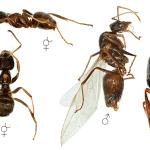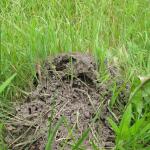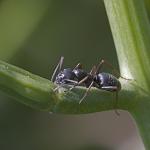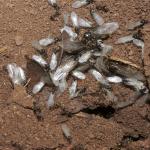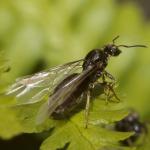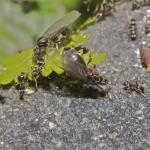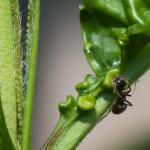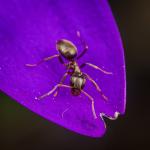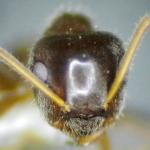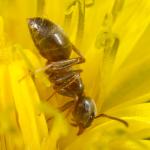Lasius niger is a small brown to dark brownish black ant that is common in gardens and if not our commonest ant is certainly the one people are most familiar with. Scapes and tibia have erect hairs. The clypeus has dense pubescence.
The ‘common black ant’ frequently referred to as Lasius niger is in fact two discrete species with different morphology and ecology - L. niger and L. platythorax Siefert 1992. This was first recognised in Seifert, 1991. The use of L. niger in the wide sense is so well ingrained that all records should be put to the agg, unless those for L. niger are specifically known to relate to L. niger: iso Seifert 1992.
Common in southern Britain, local in Ireland and Scotland. Common in parks, gardens and built-up areas. Range: from Portugal to Japan and from North Africa to Finland. Also in North America.
The map shows records for L. niger: iso Seifert 1992 and excludes records for L. niger agg.
Not regarded as scarce or threatened
L. niger: iso Seifert 1992 worker - full-face view showing dense pubescence on the clypeus.
Compare with head of L. Platythorax
Photo by Mike Fox
Found in almost any dry and open area where the ground is warmed by the sun. This includes parks, gardens, roadside verges, pavements, coastal areas and brownfield sites. Not usually found in woods or other damp or shady areas. No preference for soil type is apparent.
Alates are the familiar flying ants sometimes seen in large numbers on certain warm summer afternoons. These nuptial flights most often take place from early July to mid August.
Nests can be large and are often located under stones, paving slabs, pieces of wood, plastic or metal: in fact anything that can be warmed by the suns rays. Where there are no suitable stones etc. then large soft mound nests are sometimes found. Colonies have a single queen and from several hundred up to 10,000 workers.
Workers forage boldly in the open where they are often seen running around on bare surfaces. They are aggressive and will attack other ants. They sometimes cover their foraging trails and sometimes the stems of plants where aphids are feeding with surface tunnels of earth. They scavenge and predate on small invertebrates. They tend aphids and “milk” them for honeydew. Early in the season, when outdoor food sources are scarce, they often enter houses where they are attracted to sweet substances, and can become a nuisance. This usually stops when outdoor food sources become more plentiful.
2020


